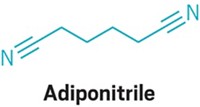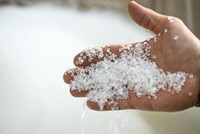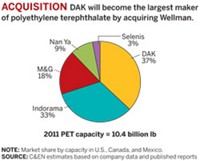Advertisement
Grab your lab coat. Let's get started
Welcome!
Welcome!
Create an account below to get 6 C&EN articles per month, receive newsletters and more - all free.
It seems this is your first time logging in online. Please enter the following information to continue.
As an ACS member you automatically get access to this site. All we need is few more details to create your reading experience.
Not you? Sign in with a different account.
Not you? Sign in with a different account.
ERROR 1
ERROR 1
ERROR 2
ERROR 2
ERROR 2
ERROR 2
ERROR 2
Password and Confirm password must match.
If you have an ACS member number, please enter it here so we can link this account to your membership. (optional)
ERROR 2
ACS values your privacy. By submitting your information, you are gaining access to C&EN and subscribing to our weekly newsletter. We use the information you provide to make your reading experience better, and we will never sell your data to third party members.
Materials
Textiles Are New Growth Business For Chemical Firms
Manufacturing: Once declining market shows new signs of life in the U.S.
by Michael McCoy
September 7, 2015
| A version of this story appeared in
Volume 93, Issue 35

DAK Americas, a subsidiary of Mexico’s largest chemical company, has announced a project that just a few years ago would have been foolhardy: an expansion of U.S. capacity for polyester fiber. The project is a sign that textiles may yet again be a growth market for chemical makers.
DAK says it will add 230 million lb per year of capacity for polyester staple fiber, a cotton-fiber-like form of polyester, at its plant in Bay St. Louis, Miss. To be completed by the second half of 2016, the expansion will bring the firm’s North American staple fiber capacity to about 700 million lb.
Polyester demand collapsed from 2006 to 2009, forcing DAK to close large amounts of capacity, explains Mark Ruday, vice president of DAK’s fibers business. But since 2012, the firm has been experiencing 4% annual growth, to the point that some customers are not getting all the fiber they want. DAK competitor Nan Ya Plastics is also expanding at its facility in Lake City, S.C., according to the consulting firm Carmichael International.
Explaining DAK’s project, Ruday points to demand from customers such as the apparel maker Gildan, which is investing more than $300 million to build yarn-spinning facilities in the southern U.S. “We think there’s some reshoring going on,” he says. “There’s growth in this industry still.”
Other fibers are also getting attention. The Chinese companies Keer Group and Sun Fiber are building cotton and recycled polyester fiber plants, respectively, in the U.S. to take advantage of ample local raw materials.
Manufacturers of textile dyes and auxiliary chemicals are benefiting from the fiber investment. For example, family-owned chemical maker Royce Colors acquired a facility in Gaffney, S.C., two years ago to support its business in vat dyes and other materials.
Since then, according to Vat Dye Manager Larry Gipson, the firm has boosted employment at the site five times over, to about 15 people, and it is hiring more. Royce is currently installing a new system for grinding dyes for textile customers. “Textiles in the U.S. are just as competitive now as overseas,” Gipson says. “Royce feels dyes are the future.”





Join the conversation
Contact the reporter
Submit a Letter to the Editor for publication
Engage with us on Twitter